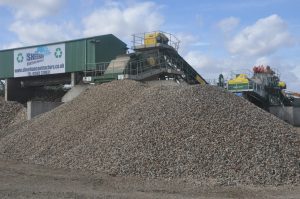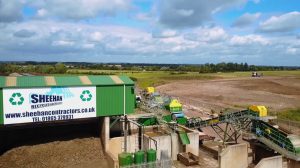The UK generates around 222 million tonnes of waste per year, with construction and demolition waste accounting for almost two-thirds of the total.
The statistics revealed annually by the Department for Environment, Food and Rural Affairs confirm the industry is the single largest contributor to waste generation in the UK. It accounts for more than five times that of household waste.
However, a lot of the C&D waste that is sent to landfill can be recovered and re-purposed into high specification products and returned into the construction system. It is the adoption of this circular driven economy approach that can significantly help the construction industry reduce waste and its carbon footprint.
Embracing change
Recycled aggregate, sand and concrete products are often misunderstood in the construction industry. Technology is continuing to enable high-grade sustainable products to be produced that are very high in quality. Companies including CDE Global are investing in continued innovation that constantly ensures recycled products can be produced in better ways that are of the same, or similar make-up to that of virgin materials.
Reducing impact on natural resources
Recycling and reusing C&D waste helps reduce the pressure both on landfill and on virgin materials.
Concrete products produced from recycled aggregates and sand are sometimes unfairly compared against higher strength concrete products produced using virgin materials. What is important is that the products are used appropriately. The potential of concrete produced from recycled products is vast if it is embraced wherever it is practical and suitable for use.

Circular driven economy
Maximising local supply chains and using regenerative materials produced locally yields multiple benefits. It helps reduce carbon emissions, both via the products and the associated reduced transport needs. It reduces the pressure on landfill and associated costs of landfill taxes. Furthermore, as the construction industry continues to face global supply chain challenges, maximising local solutions helps ensure demand is met.
At the Sheehan Group the Circular Driven Economy is at the heart of our businesses. Our CDE wet processing plant produces high quality recycled sand and sharp sand and aggregate. Additionally, we produce low-carbon concrete blocks using C&D waste. This process enables us to divert more than 100,000 tonnes of inert waste from landfill annually. By embracing CDE technology we have been able to reduce concrete consumption and still achieve the same high-quality specification end products.

Net-zero
The construction industry is aiming to become carbon zero by 2050. Combined with this the demand for construction will continue to rise. It is anticipated that by 2050, more than two-thirds of the population globally will be living in urban environments, according to the UN.
This will undoubtedly put further pressure on natural resources. Currently it is estimated 40 to 50 billion metric tonnes of primary aggregate is extracted annually globally. GAIN, the Global Aggregates Information Network estimates aggregates production will rise to 60 billion tonnes annually over the next decade to support urban growth.
The demand on natural resources is not sustainable, or carbon efficient, especially when importation is considered. Therefore, we remain committed to the Circular Driven Economy and the use of CDE technology to produce sustainable construction products and materials.
The recycling sector will continue to grow and as technology evolves the products and material produced will improve. Turning waste into high quality materials makes logical sense and presents a great opportunity to make an even bigger difference both to the construction industry and the environment.